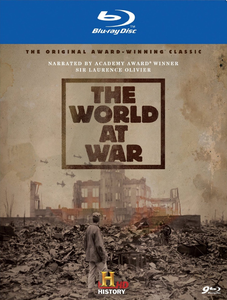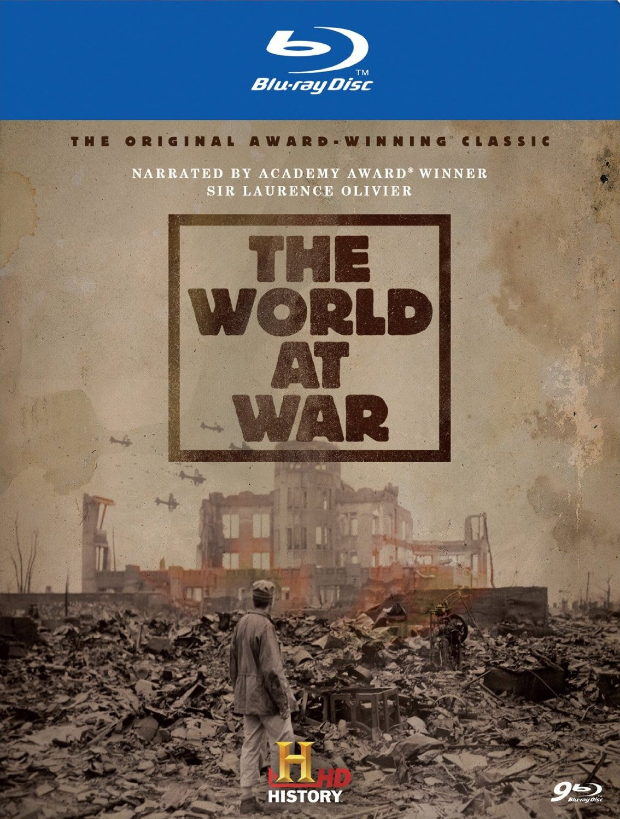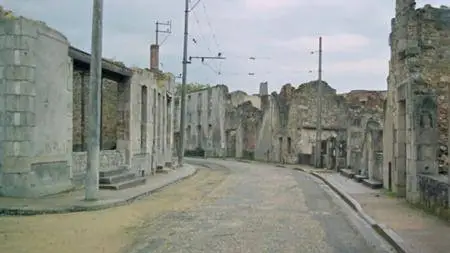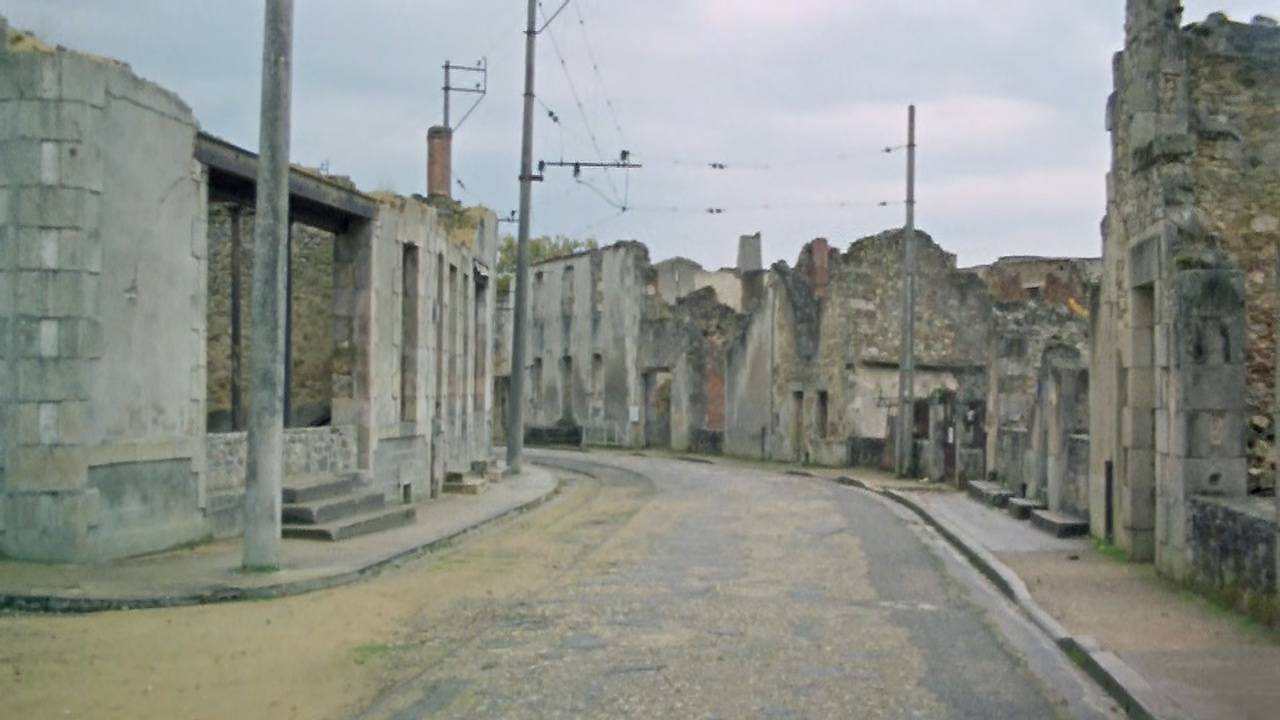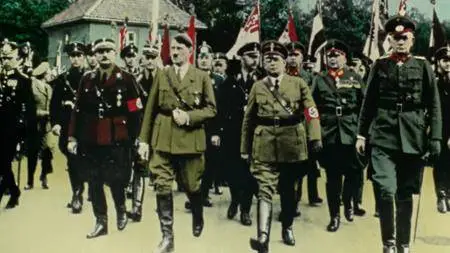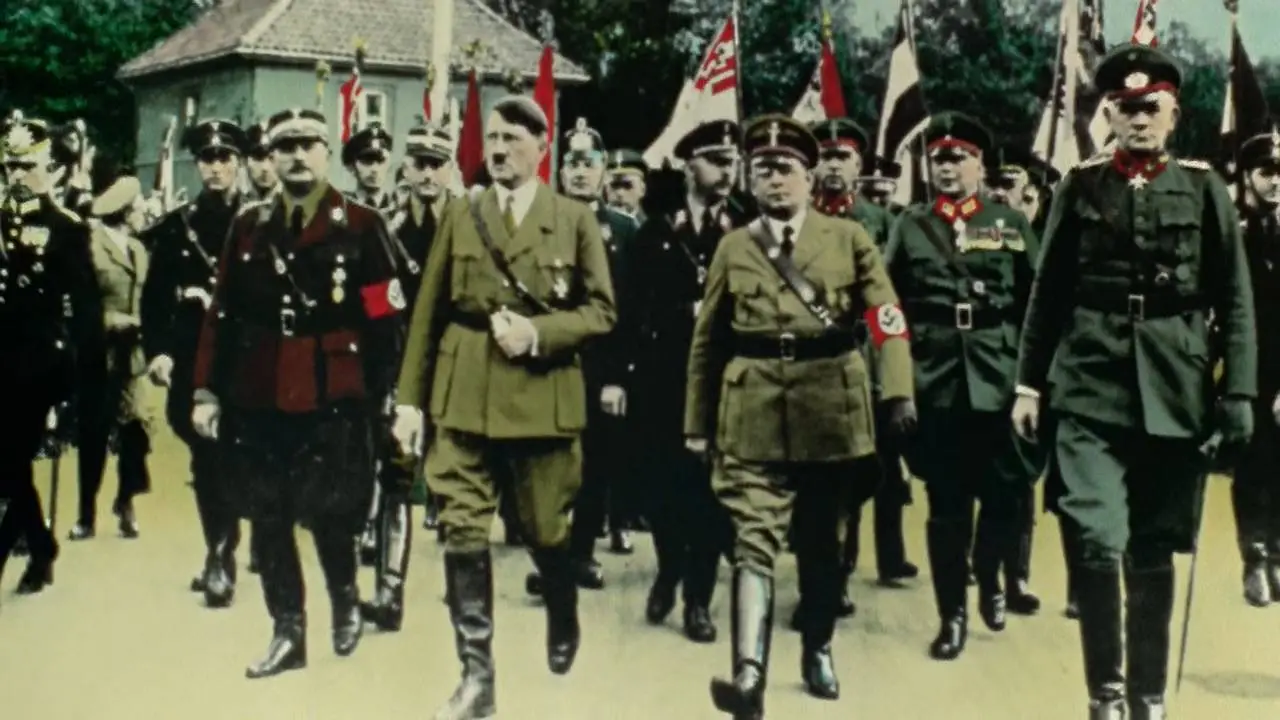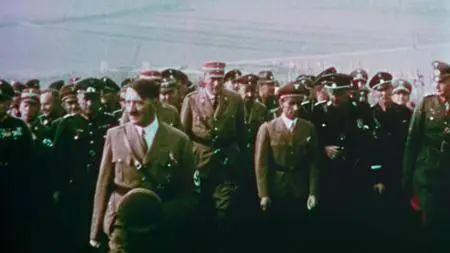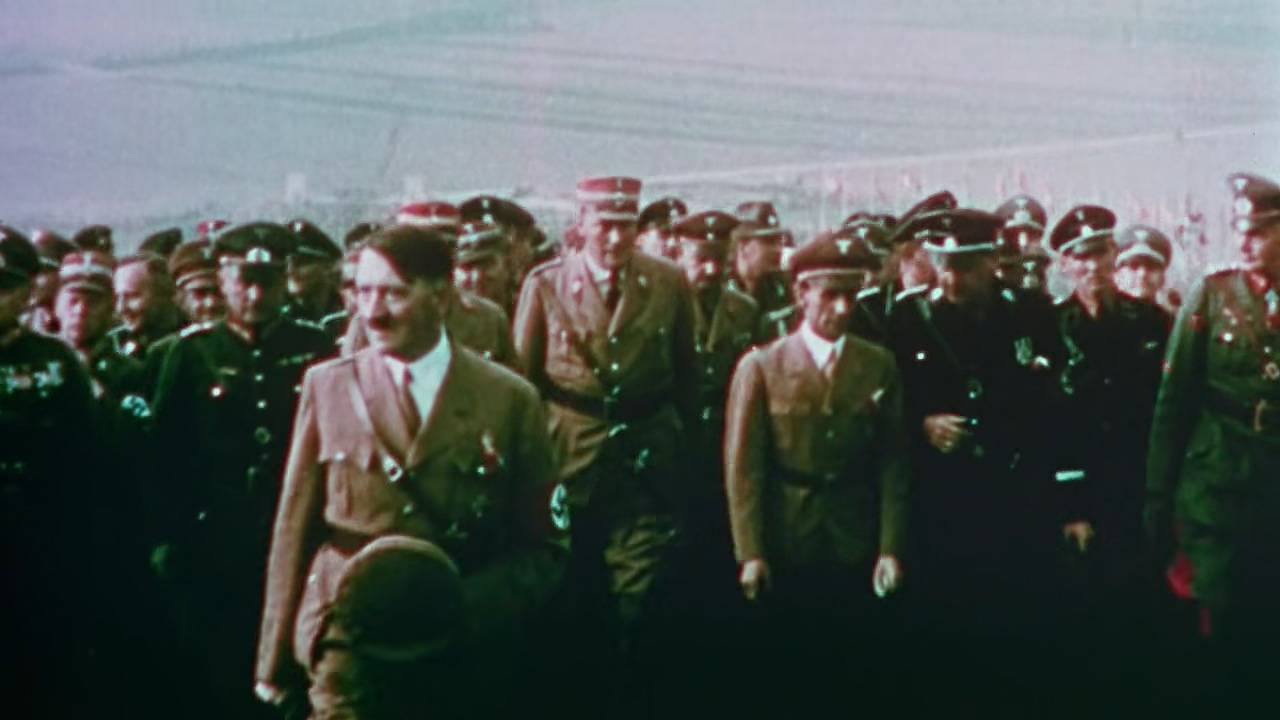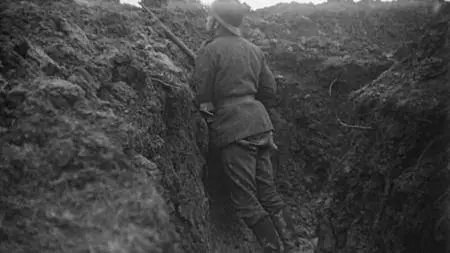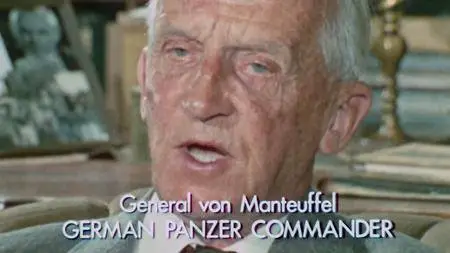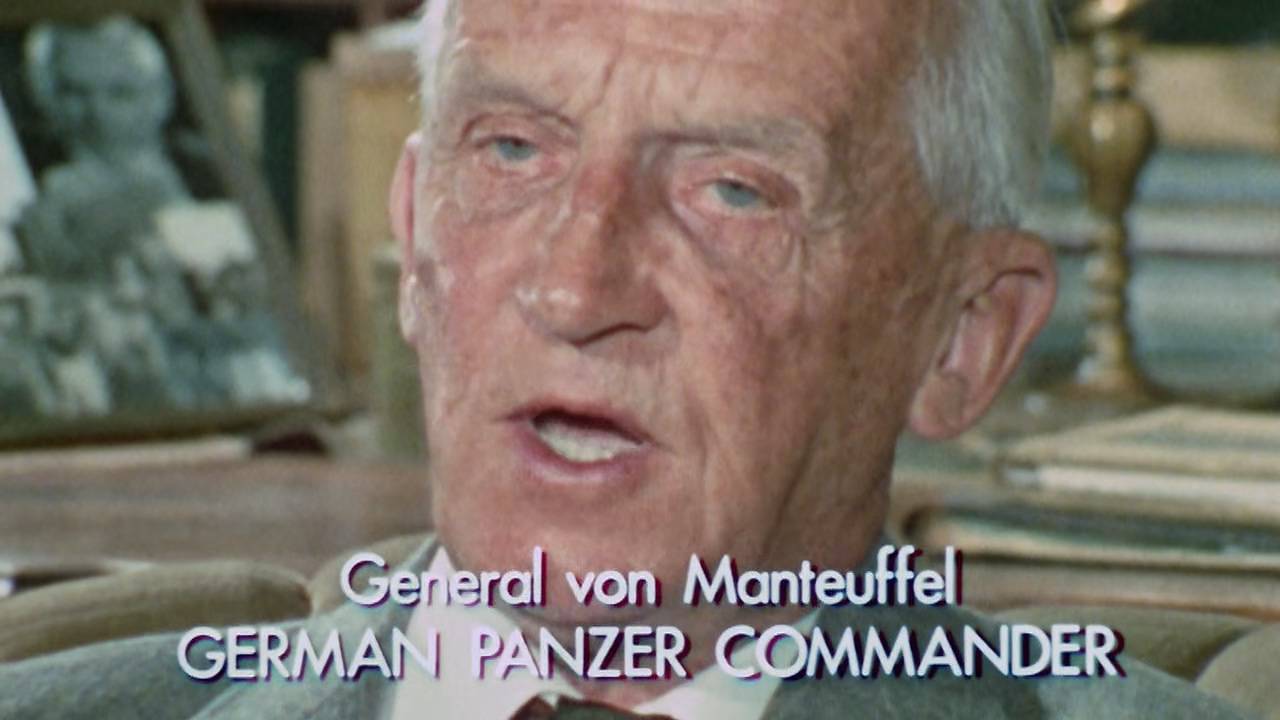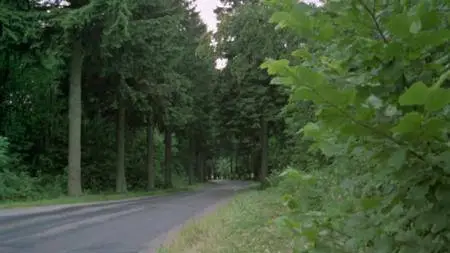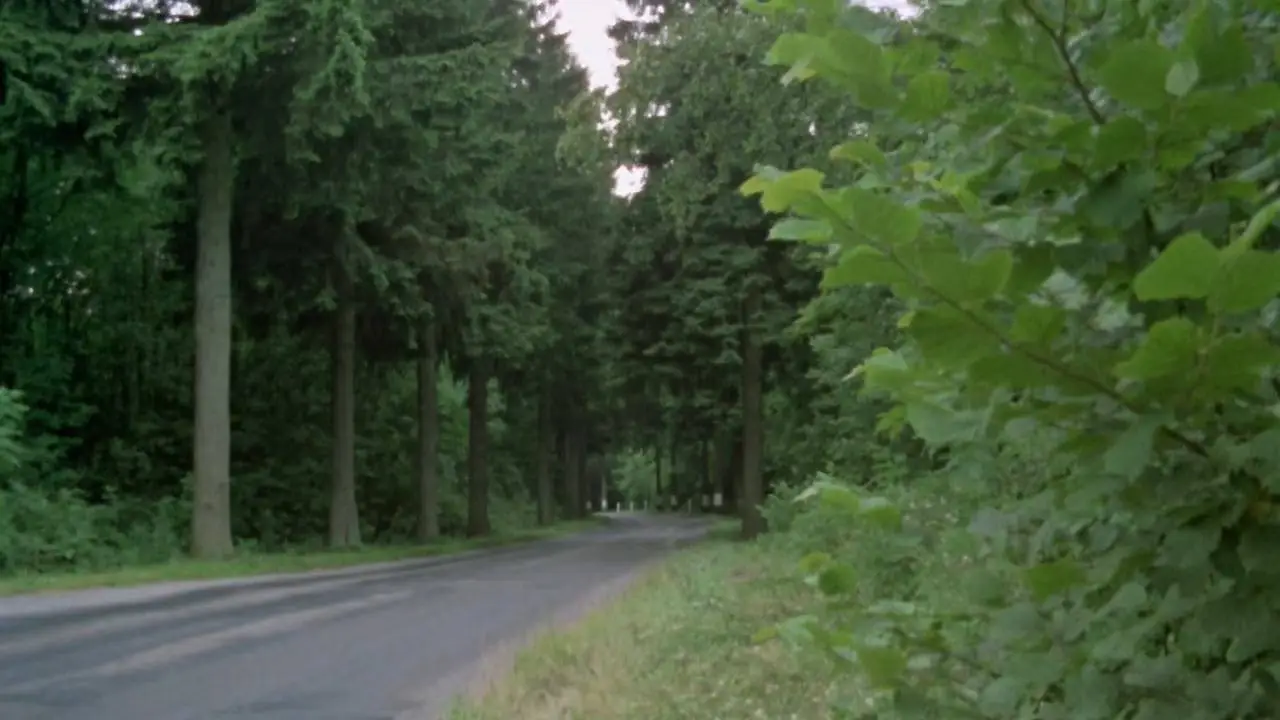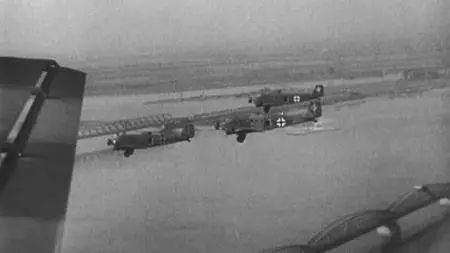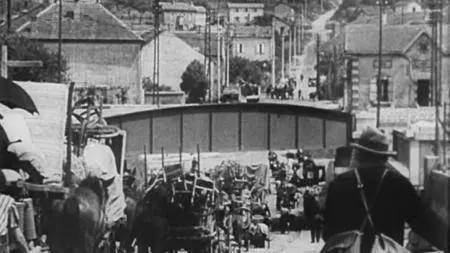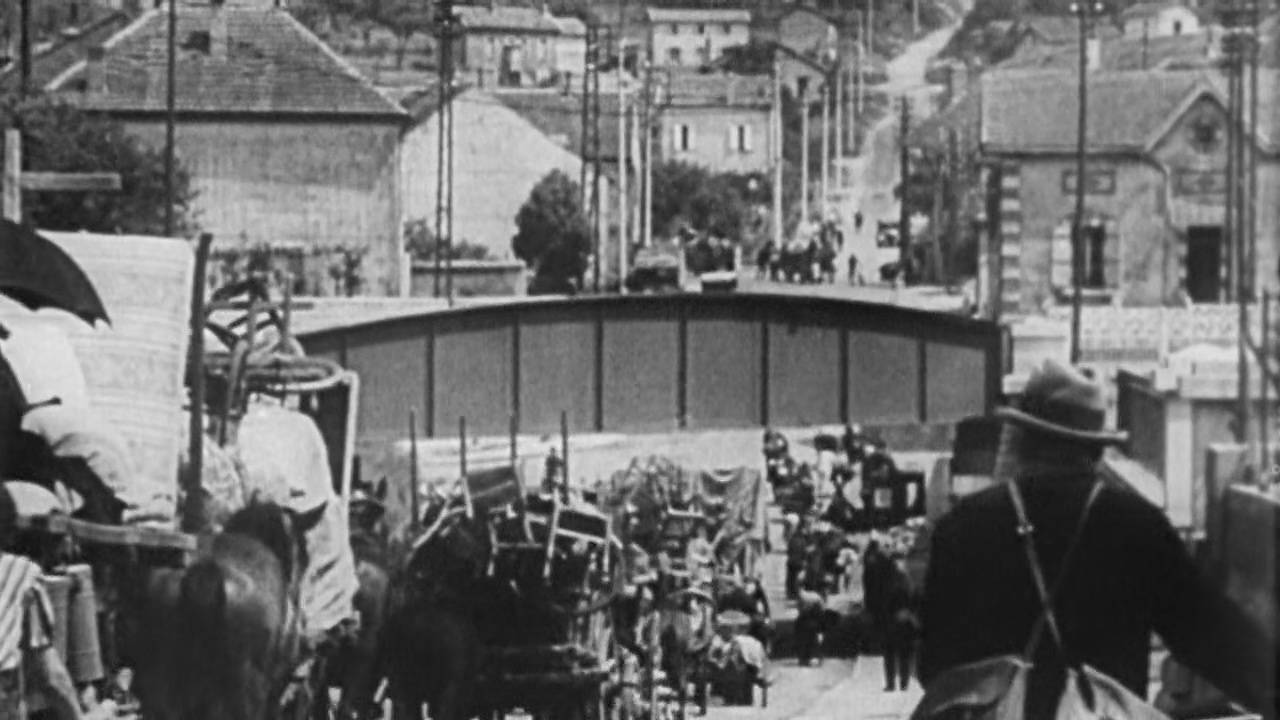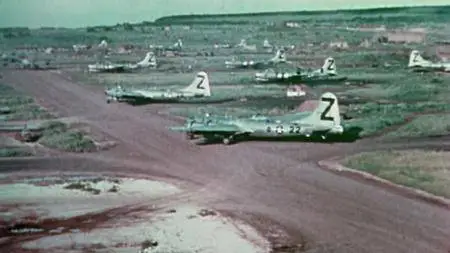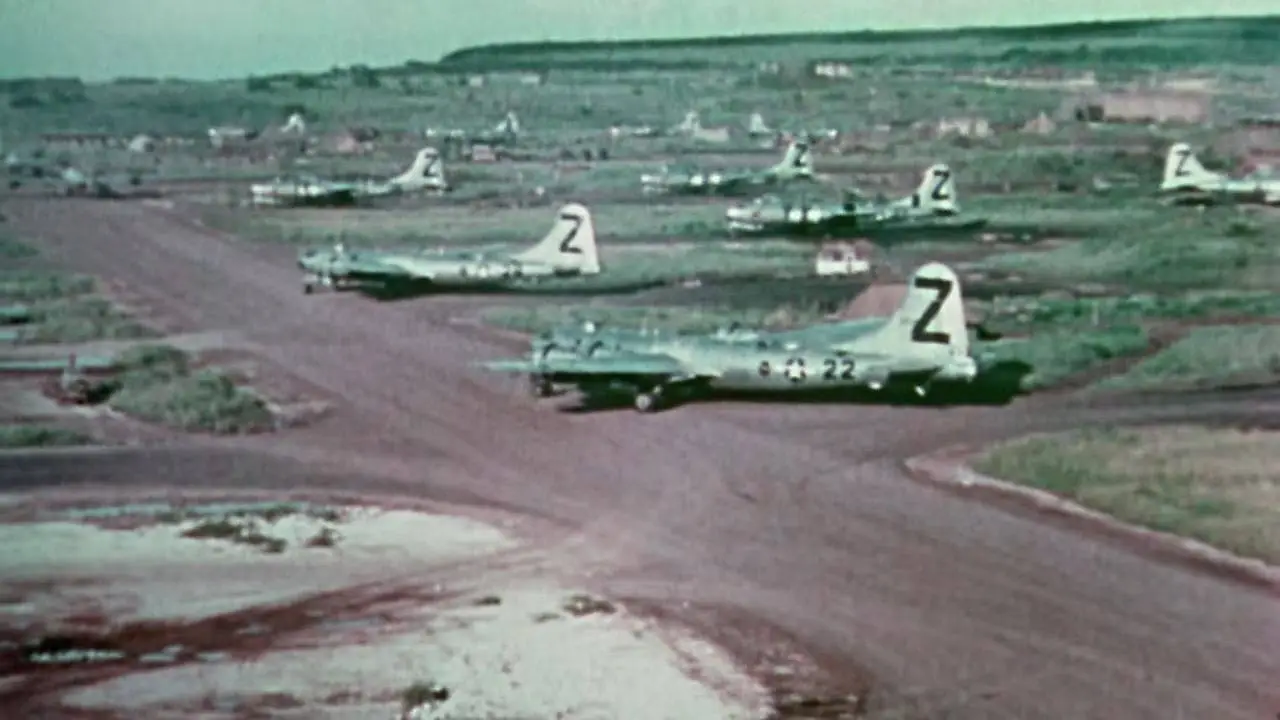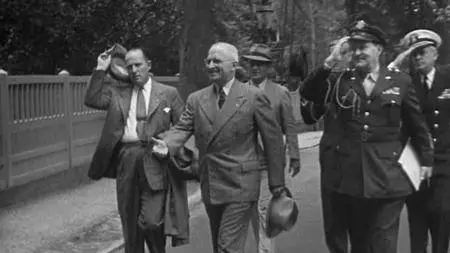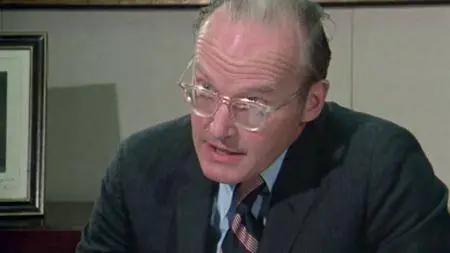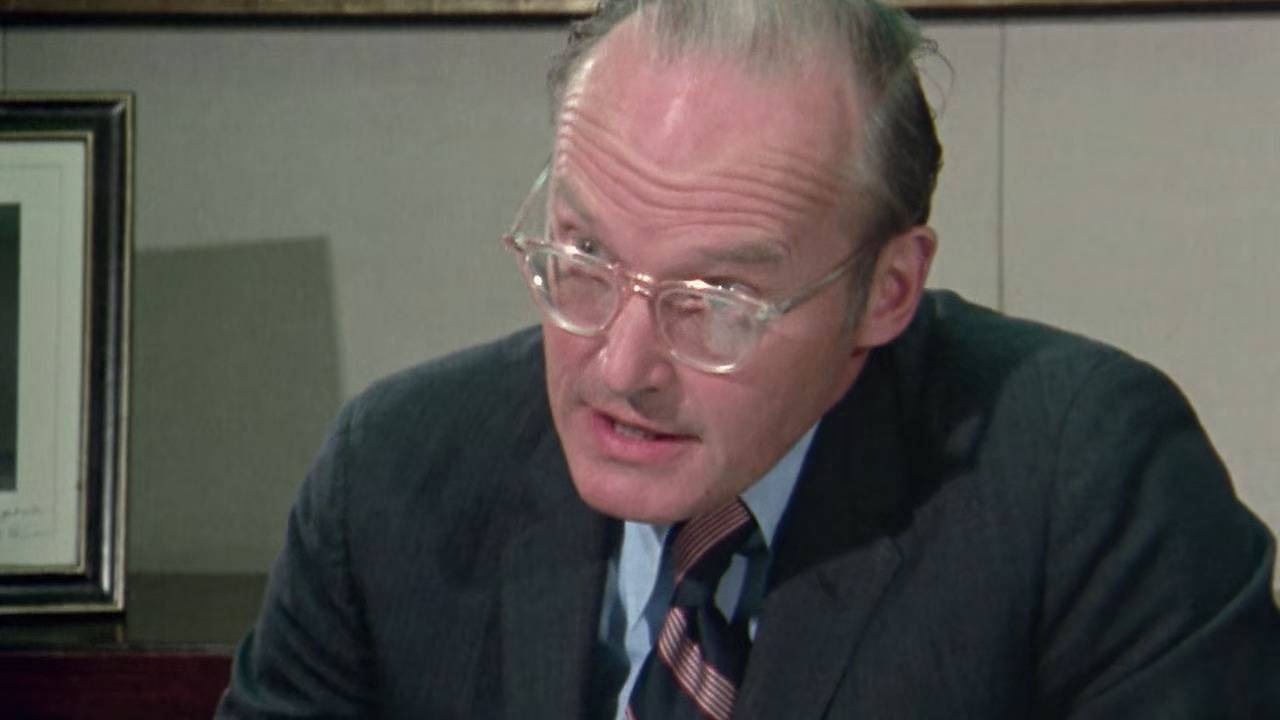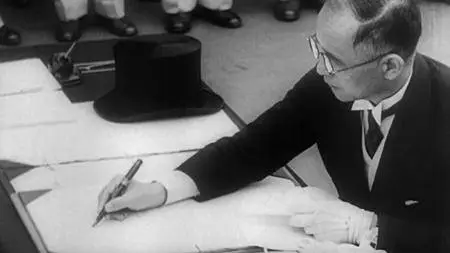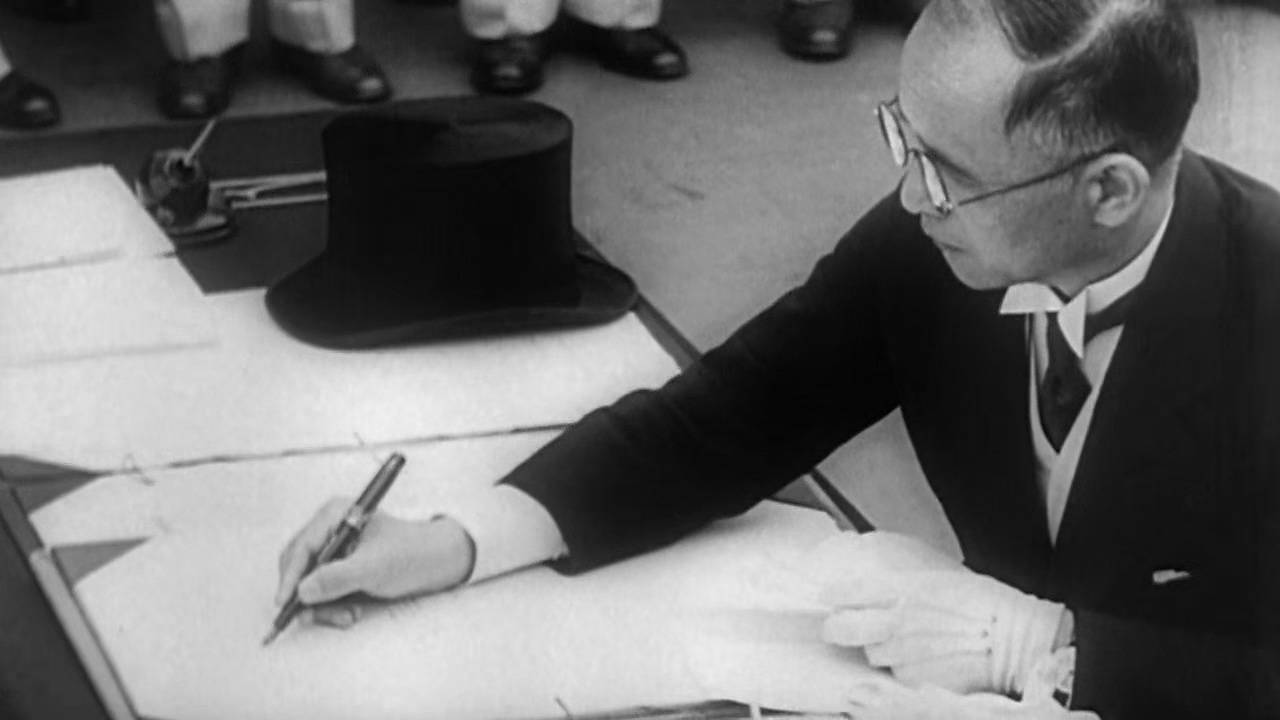The World at War (1973-1974)
Complete Series | 26 Episodes | IMDb Top Rated TV #11
720p BDRip | mkv | x265 HEVC @ ~2260 Kbps, 23.976 FPS | 1280 x 720 | 22h 32min | 24.8 GB
5.1 English AC-3 @ 448 Kbps, 48.0 kHz, 16-bit | Subtitle: None
Genres: Documentary, War, History
Complete Series | 26 Episodes | IMDb Top Rated TV #11
720p BDRip | mkv | x265 HEVC @ ~2260 Kbps, 23.976 FPS | 1280 x 720 | 22h 32min | 24.8 GB
5.1 English AC-3 @ 448 Kbps, 48.0 kHz, 16-bit | Subtitle: None
Genres: Documentary, War, History
Full screen. Widescreen. 16:9. 4:3. Anamorphic. Do you remember a time when the public at large couldn't care less about any of these terms? It really wasn't so long ago. But we home video elitists knew from the earliest days of VHS that we weren't getting the "whole picture," at least with regard to post-Robe fare. Many of you home video collectors may have suffered the slings and arrows of spousal outrage as you have repeatedly bought the same title in subsequent releases. My own wife has had a mantra of complaint that "first it was VHS, then it was widescreen VHS, then it was DVD, then it was widescreen DVD, then it was anamorphically enhanced widescreen DVD, and now it's Blu-ray." The cynic in me wants to answer, "So, what's your point?", but of course the desire to stay married has so far won out, and discretion is the better part of marital valor. But the slow slog toward original aspect ratios has really been one of consumer education. It's virtually a default now that any major release, whether Academy ratio or 2.39:1, will see the home video light of day in its proper aspect ratio. But Fremantle Media, the owners of The World at War, decided, evidently after much internal debate, to reframe the release of this iconic series in 16:9 as part of its Blu-ray release. Why? Economics, mostly. Quite simply, Fremantle can't recoup the enormous costs of this expansive restoration and upgrade simply through sales of Blu-rays alone. They must relicense the series to television networks again, and the market now demands a 1.78:1 aspect ratio for high definition marketability. It's of course ironic in the historic scheme of things, as OAR enthusiasts use to scream about 16:9 (or wider) aspect ratios being trimmed down to 1.33:1. Now quite the opposite has occurred, obviously to some consumers' chagrin (if not outright outrage).
I'll mostly defer more commentary about this decision to the video section below, but I would like to make a quick response to consumers who are upset by decisions like this and, to utilize another title I recently reviewed, the decision not to include lossless audio on Grindhouse. We've become rather spoiled home video consumers, and sometimes that spoilage makes us more than a bit petulant. I'm old enough to remember when if a classic film didn't get broadcast on Saturday Night at the Movies, you didn't get to see it. You similarly had two chances to catch most episodic television, its first broadcast and its one and only rerun. Of course times are different now, and for the most part much better, but temper tantrums are not ultimately going to make any difference to media conglomerates who make these decisions on largely economic grounds. In some cases, they're indefensible. I would argue in the case of The World at War, that we've gotten a rather sizable tradeoff in terms of image upgrade and the care that was taken in the reframing that should at least partially offset purists' (and I'm one of them) hard feelings.
Now on to the series itself. The 26 episodes of The World at War run the gamut from focusing on specific battles and campaigns to more personal stories of those caught up in the tumult. That was part and parcel of Jeremy Isaacs' design for the series. He wanted The World at War to play like an episodic drama, where the ending of each episode made the audience eager to return the next week to see what was going to happen. And that sense of drama is infused throughout virtually every outing of this magnificent series. Part of what makes this such exceptionally visceral fare is the ubiquitous interview segments, which feature a host of well known people associated with various campaigns, as well as aides to former Nazi higher-ups, and a plethora of civilians who were caught up in various tragic circumstances. Some of these people are only in their late 30s or early 40s in 1973, and their memories of surviving the war as children are haunting, both to them and the viewer.
The other major element of The World at War which makes it so remarkable is the truly stunning amoung of archival footage, a surprising amount of it in color (all of which has been color corrected for this release, with sometimes amazing results). Everything from the early days of Hitler to iconic moments like the bombing of Pearl Harbor are caught in a vast array of "you are there" newsreels, as well as some really rare and often disturbing footage, such as the American newsman talking to a German and reporting that America has come to understand that the "rumors" of Nazi atrocities are unbelievable and that Hitler's government is the finest in the world.
But the series really excels at giving a wealth of context for the frankly insane behavior of several of the major nations involved in the conflict, and not just on the Axis side. British appeasement and American isolationism played into the tragedy as surely as did Hitler's megalomania and racial idiocy, and The World at War provides an at times startlingly, and depressingly, clear view of the unfortunate concatenation of events which ultimately led to the Holocaust and worldwide conflict. Laurence Olivier's redolent voice provides perfect gravitas for the series, one which never shirks from the horrors visited on mankind, but which also doesn't glorify or sensationalize anything. In fact one of the reasons this series has been so universally acclaimed is its calm, objective demeanor, one that doesn't vilify the "enemies" unnecessarily while at the same time refusing to act as apologist for any individual's, or indeed nation's, stupidity.
I'll mostly defer more commentary about this decision to the video section below, but I would like to make a quick response to consumers who are upset by decisions like this and, to utilize another title I recently reviewed, the decision not to include lossless audio on Grindhouse. We've become rather spoiled home video consumers, and sometimes that spoilage makes us more than a bit petulant. I'm old enough to remember when if a classic film didn't get broadcast on Saturday Night at the Movies, you didn't get to see it. You similarly had two chances to catch most episodic television, its first broadcast and its one and only rerun. Of course times are different now, and for the most part much better, but temper tantrums are not ultimately going to make any difference to media conglomerates who make these decisions on largely economic grounds. In some cases, they're indefensible. I would argue in the case of The World at War, that we've gotten a rather sizable tradeoff in terms of image upgrade and the care that was taken in the reframing that should at least partially offset purists' (and I'm one of them) hard feelings.
Now on to the series itself. The 26 episodes of The World at War run the gamut from focusing on specific battles and campaigns to more personal stories of those caught up in the tumult. That was part and parcel of Jeremy Isaacs' design for the series. He wanted The World at War to play like an episodic drama, where the ending of each episode made the audience eager to return the next week to see what was going to happen. And that sense of drama is infused throughout virtually every outing of this magnificent series. Part of what makes this such exceptionally visceral fare is the ubiquitous interview segments, which feature a host of well known people associated with various campaigns, as well as aides to former Nazi higher-ups, and a plethora of civilians who were caught up in various tragic circumstances. Some of these people are only in their late 30s or early 40s in 1973, and their memories of surviving the war as children are haunting, both to them and the viewer.
The other major element of The World at War which makes it so remarkable is the truly stunning amoung of archival footage, a surprising amount of it in color (all of which has been color corrected for this release, with sometimes amazing results). Everything from the early days of Hitler to iconic moments like the bombing of Pearl Harbor are caught in a vast array of "you are there" newsreels, as well as some really rare and often disturbing footage, such as the American newsman talking to a German and reporting that America has come to understand that the "rumors" of Nazi atrocities are unbelievable and that Hitler's government is the finest in the world.
But the series really excels at giving a wealth of context for the frankly insane behavior of several of the major nations involved in the conflict, and not just on the Axis side. British appeasement and American isolationism played into the tragedy as surely as did Hitler's megalomania and racial idiocy, and The World at War provides an at times startlingly, and depressingly, clear view of the unfortunate concatenation of events which ultimately led to the Holocaust and worldwide conflict. Laurence Olivier's redolent voice provides perfect gravitas for the series, one which never shirks from the horrors visited on mankind, but which also doesn't glorify or sensationalize anything. In fact one of the reasons this series has been so universally acclaimed is its calm, objective demeanor, one that doesn't vilify the "enemies" unnecessarily while at the same time refusing to act as apologist for any individual's, or indeed nation's, stupidity.
EPISODE LIST:
01. A New Germany (1933–1939)
02. Distant War (September 1939 – May 1940)
03. France Falls (May – June 1940)
04. Alone (May 1940 – May 1941)
05. Barbarossa (June – December 1941)
06. Banzai!: Japan (1931–1942)
07. On Our Way: U.S.A. (1939–1942)
08. The Desert: North Africa (1940–1943)
09. Stalingrad (June 1942 – February 1943)
10. Wolf Pack: U-Boats in the Atlantic (1939–1943)
11. Red Star: The Soviet Union (1941–1943)
12. Whirlwind: Bombing Germany (September 1939 – April 1944)
13. Tough Old Gut: Italy (1943–1944)
14. It's A Lovely Day Tomorrow: Burma (1942–1944)
15. Home Fires: Britain (1940–1944)
16. Inside the Reich: Germany (1940-1944)
17. Morning: (June – August 1944)
18. Occupation: Holland (1940–1944)
19. Pincers: (August 1944 – March 1945)
20. Genocide (1941–1945)
21. Nemesis: Germany (February – May 1945)
22. Japan (1941–1945)
23. Pacific (February 1942 – July 1945)
24. The Bomb (February – September 1945)
25. Reckoning (1945. . .And After)
26. Remember
* Each episode's duration is approximately 54 minutes.
Please Note: Playback of the H.265/HEVC encoded video files in VLC media player may cause problem (like Green Screen). A fresh install of the player or a new version can solve this problem. I strongly suggest you to download and install "K-Lite Codec Pack (Full or Mega version; totally free with WMP Classic)" on your system first and then try to play the file in VLC. Or, you can just install PotPlayer, and no codecs will be needed. I use this player for playing all sorts of media… from MP3 audio files to 4K UHD video files.MS-WAR, MS-WWII


